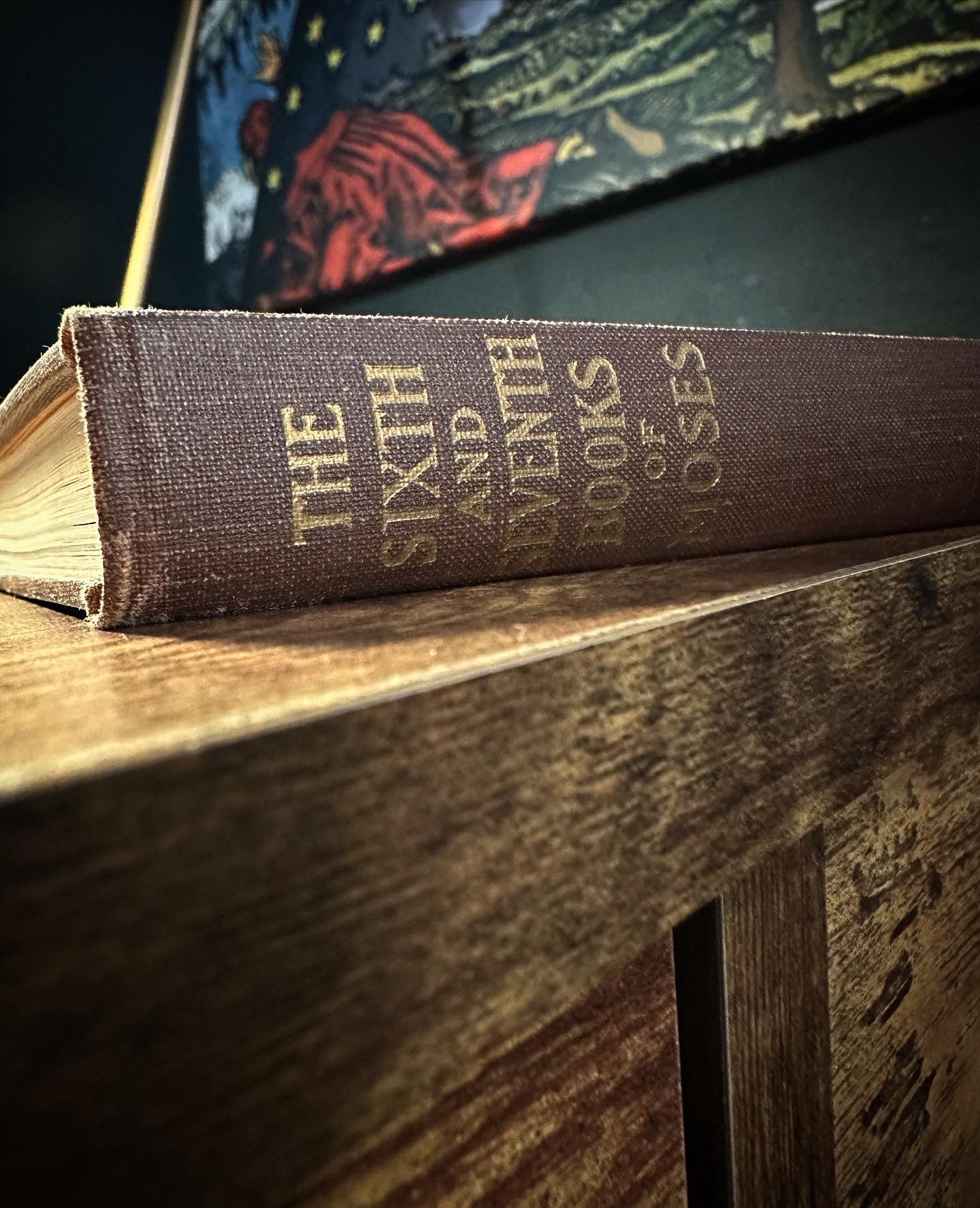Sixth and Seventh Books of Moses: Everything You Need to Know
Have you ever heard of the 7 books of Moses? Yes, we believe you have but the only thing we could say you barely know is what the book is all about. Now that the question: what is the 7 books of Moses?
The Sixth and Seventh Books of Moses is an 18th- or 19th-century magical text allegedly composed by Moses, and passed down as hidden (or lost) books of the Hebrew Bible.
Self-described as “the wonderful arts of the old Hebrews, taken from the Mosaic books of the Kabbalah and the Talmud”, it is a grimoire, or book of magical incantations and seals, that purports to instruct the reader in the spells used to create some of the miracles portrayed in the Bible as well as to grant other forms of good fortune and good health.
The book contains reputed Talmudic magic names, words, and ideograms, some written in Hebrew and some with letters from the Latin alphabet. It contains “Seals” or magical drawings accompanied by instructions to assist the user in performing various tasks, from controlling weather or people to contacting the dead or Biblical religious figures.

Copies have been traced to 18th-century German pamphlets. Still, an 1849 printing, aided by the appearance of the popular press in the 19th century, spread the text through Germany and Northern Europe to German Americans and eventually helped popularize the books among African Americans in the United States, the Caribbean, and Anglophone West Africa.
It influenced European Occult Spiritualism, African American hoodoo folk magic, and magical-spiritual practices in the Caribbean and West Africa.
An older magical book, a fourth-century Greek papyrus entitled Eighth Book of Moses otherwise unrelated to the Sixth and Seventh Books, was found in Thebes in the 19th century and published as part of the Greek Magical Papyri.
History of Sixth and Seventh Books of Moses
No first version of this work has been established, but early versions started to appear as inexpensive pamphlets in Germany in the 18th century.
Elements of the “Seventh Book”, such as “The Seven Semiphoras of Adam” and “The Seven Semiphoras of Moses” appear to have emanated from the seventh book of the earlier European copies of the Sefer Raziel HaMalakh.
The work came to wide prominence when published as volume 6 of Das Kloster (The Cloister) in 1849 in Stuttgart by antiquarian Johann Scheible.
Historian Owen Davies traces copies of the work from the 18th century in Germany. After circulating there, the text was popularized in the United States first in the communities of the Pennsylvania Dutch.
Overview of the Sixth and Seventh Books of Moses
A text long hailed by occult masters as a valuable tool in the study and practice of Kabalistic magic. The Sixth & Seventh Books of Moses was first published in Germany, in 1849.
Its writer’s name Johann Scheibel is shrouded in mystery. The writer claimed that the seals and invocations given in the book emanated from ancient Hebrew sources, particularly the Talmud.
It is not sure whether or not his claims were based on truth, although Talmudic scholars will probably refute that there are any references in Talmudic literature to the Sixth & Seventh Books of Moses. While the source of the book will probably never be realized, its popularity and durability can hardly be denied.
The revised edition is an attempt at the reorganization of a text, long hailed by occult masters as a valuable tool in the study and practice of cabalistic magic. “Sakpata (Babalz) is the god of suffering.
He instructs his worshippers to cope with misfortunes (particularly disease). If Sakpata strikes a man with smallpox, it is because he wishes to establish a very close relationship with that person. Only the man who is not mature enough or strong enough will die of the disease. For the worthy person, it is like an initiation: a death and resurrection into a mature, richer life.”
What are the Seven Books of Moses About?
The Sixth and Seventh Books of Moses are two grimoires that have magical seals, with letters in Hebrew and an unknown script; and the lists of names of demonic entities.
Allegedly composed by Moses, it has instructions for spells and incantations to summon spirits, with Talmudic magic names and words. The book claims to depict a secret knowledge that God gave Moses and which was hidden throughout the centuries.
No complete manuscript has been found that dates earlier than this 1849 printing by Johann Scheible. The text became famous within communities that practiced folk magic, and Christian magic and was also used by Obeah practitioners, becoming one of the central texts of Jamaican Obeah.
It also circulated throughout Scandinavian countries where it was referred to as The Black Bible.
